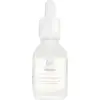What's inside
What's inside
 Key Ingredients
Key Ingredients

No key ingredients
 Benefits
Benefits

 Concerns
Concerns

No concerns
 Ingredients Side-by-side
Ingredients Side-by-side

Water
Skin ConditioningGlycerin
HumectantButylene Glycol
HumectantSorbitol
HumectantBetaine
HumectantAloe Barbadensis Leaf Juice
Skin ConditioningPhenoxyethanol
PreservativeXanthan Gum
EmulsifyingPanthenol
Skin ConditioningCaffeine
Skin ConditioningEthylhexylglycerin
Skin ConditioningEscin
TonicMalva Officinalis Flower Extract
Skin ConditioningBiosaccharide Gum-1
HumectantSodium Citrate
BufferingWater
Skin ConditioningPropanediol
SolventAloe Barbadensis Leaf Juice
Skin ConditioningSodium Stearate
CleansingXylitol
HumectantLactococcus Ferment Lysate
Skin ConditioningSynthetic Fluorphlogopite
Oleth-20
CleansingGlycerin
HumectantCaffeine
Skin ConditioningCitrullus Lanatus Fruit Extract
Skin ConditioningLens Esculenta Fruit Extract
Skin ConditioningPyrus Malus Fruit Extract
Skin ConditioningHyaluronic Acid
HumectantVaccinium Angustifolium Fruit Extract
Skin ProtectingTocopherol
AntioxidantSodium PCA
HumectantDicapryl Succinate
EmollientMenthone Glycerin Acetal
RefreshingMenthyl Lactate
MaskingCapryloyl Glycerin/Sebacic Acid Copolymer
Skin ConditioningXanthan Gum
EmulsifyingSodium Lactate
BufferingTin Oxide
AbrasiveSodium Chloride
MaskingEthylhexylglycerin
Skin ConditioningPhenoxyethanol
PreservativeSodium Benzoate
MaskingPotassium Sorbate
PreservativeCI 77891
Cosmetic ColorantCI 42090
Cosmetic ColorantCI 19140
Cosmetic ColorantWater, Propanediol, Aloe Barbadensis Leaf Juice, Sodium Stearate, Xylitol, Lactococcus Ferment Lysate, Synthetic Fluorphlogopite, Oleth-20, Glycerin, Caffeine, Citrullus Lanatus Fruit Extract, Lens Esculenta Fruit Extract, Pyrus Malus Fruit Extract, Hyaluronic Acid, Vaccinium Angustifolium Fruit Extract, Tocopherol, Sodium PCA, Dicapryl Succinate, Menthone Glycerin Acetal, Menthyl Lactate, Capryloyl Glycerin/Sebacic Acid Copolymer, Xanthan Gum, Sodium Lactate, Tin Oxide, Sodium Chloride, Ethylhexylglycerin, Phenoxyethanol, Sodium Benzoate, Potassium Sorbate, CI 77891, CI 42090, CI 19140
 Reviews
Reviews

Ingredients Explained
These ingredients are found in both products.
Ingredients higher up in an ingredient list are typically present in a larger amount.
Aloe Barbadensis Leaf Juice comes from leaves of the aloe plant. Aloe Barbadensis Leaf Juice is best known for helping to soothe sunburns. It is also anti-inflammatory, moisturizing, antiseptic, and can help heal wounds.
Aloe is packed with good stuff including Vitamins A, C, and E. These vitamins are antioxidants, which help fight free-radicals and the damage they may cause. Free-radicals are molecules that may damage your skin cells, such as pollution.
Aloe Barbadensis Leaf Juice also contains sugars. These sugars come in the form of monosaccharides and polysaccharides, folic acid, and choline. These sugars are able to help bind moisture to skin.
It also contains minerals such as calcium, 12 anthraquinones, fatty acids, amino acids, and Vitamin B12.
Learn more about Aloe Barbadensis Leaf JuiceCaffeine is most associated with coffee, tea, and cacao. In skincare, it helps with calming inflammation and is rich in antioxidants.
While caffeine is used to treat cellulite and and dark circles, further studies are needed to prove this. It has been believed to help with these skin conditions due to its ability to dilate blood vessels and increase blood flow.
Some studies are looking into caffeine's ability to protect against UV rays.
Learn more about CaffeineEthylhexylglycerin (we can't pronounce this either) is commonly used as a preservative and skin softener. It is derived from glyceryl.
You might see Ethylhexylglycerin often paired with other preservatives such as phenoxyethanol. Ethylhexylglycerin has been found to increase the effectiveness of these other preservatives.
Glycerin is already naturally found in your skin. It helps moisturize and protect your skin.
A study from 2016 found glycerin to be more effective as a humectant than AHAs and hyaluronic acid.
As a humectant, it helps the skin stay hydrated by pulling moisture to your skin. The low molecular weight of glycerin allows it to pull moisture into the deeper layers of your skin.
Hydrated skin improves your skin barrier; Your skin barrier helps protect against irritants and bacteria.
Glycerin has also been found to have antimicrobial and antiviral properties. Due to these properties, glycerin is often used in wound and burn treatments.
In cosmetics, glycerin is usually derived from plants such as soybean or palm. However, it can also be sourced from animals, such as tallow or animal fat.
This ingredient is organic, colorless, odorless, and non-toxic.
Glycerin is the name for this ingredient in American English. British English uses Glycerol/Glycerine.
Learn more about GlycerinPhenoxyethanol is a preservative that has germicide, antimicrobial, and aromatic properties. Studies show that phenoxyethanol can prevent microbial growth. By itself, it has a scent that is similar to that of a rose.
It's often used in formulations along with Caprylyl Glycol to preserve the shelf life of products.
Water. It's the most common cosmetic ingredient of all. You'll usually see it at the top of ingredient lists, meaning that it makes up the largest part of the product.
So why is it so popular? Water most often acts as a solvent - this means that it helps dissolve other ingredients into the formulation.
You'll also recognize water as that liquid we all need to stay alive. If you see this, drink a glass of water. Stay hydrated!
Learn more about WaterXanthan gum is used as a stabilizer and thickener within cosmetic products. It helps give products a sticky, thick feeling - preventing them from being too runny.
On the technical side of things, xanthan gum is a polysaccharide - a combination consisting of multiple sugar molecules bonded together.
Xanthan gum is a pretty common and great ingredient. It is a natural, non-toxic, non-irritating ingredient that is also commonly used in food products.
Learn more about Xanthan Gum